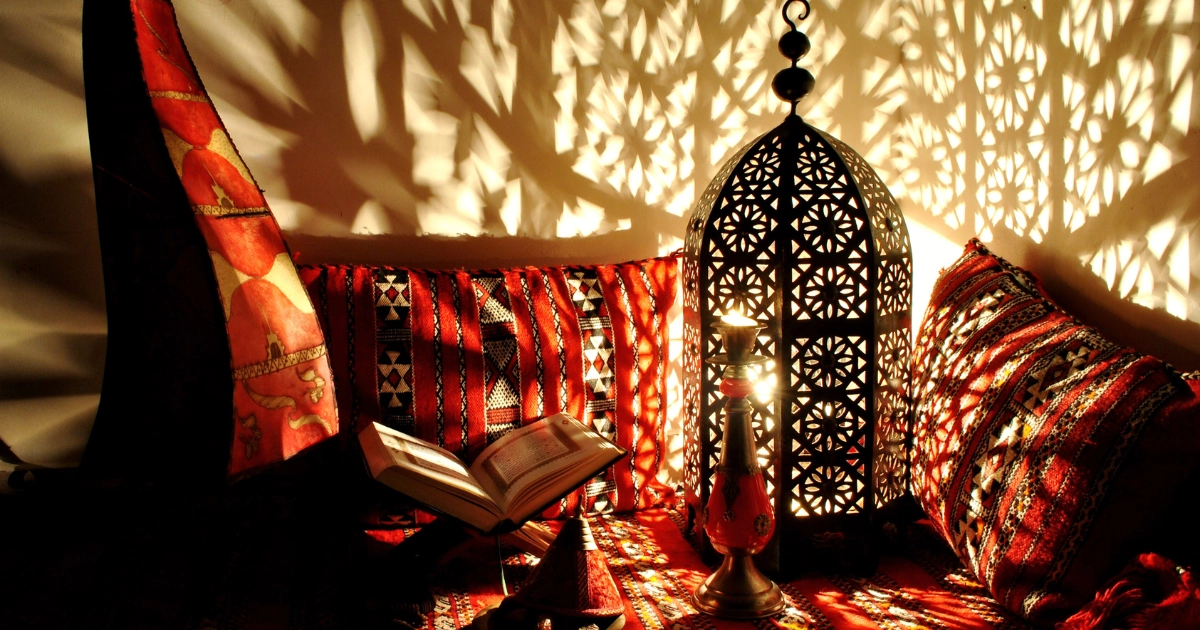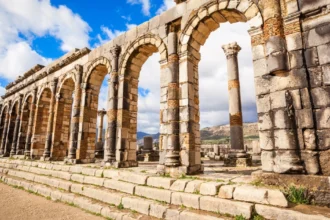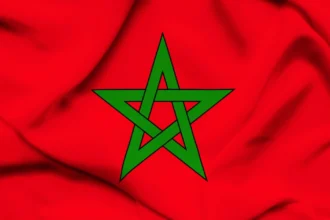Did you know that Morocco hosts over 13 million tourists annually, yet less than 40% of first-time visitors feel adequately prepared for the rich cultural nuances they encounter? Morocco’s culture represents a fascinating blend of Arab, Berber, European and African influences, creating one of the most diverse cultural landscapes in North Africa. Whether you’re planning your first visit or simply curious about morocco culture, this comprehensive guide will help you navigate the vibrant tapestry of traditions, customs, and experiences that make Morocco truly unique.
Moroccan culture is a bridge that connects the deep history with a vibrant present.
Morocco Culture Explorer
Essential Cultural Elements to Know
Morocco’s cultural identity is built upon several foundational elements that shape daily life and social interactions:
| Cultural Element | Description | Significance in Morocco Culture |
|---|---|---|
| Religion | Islam (99% of population) | Influences daily routines, architecture, art, and social norms |
| Languages | Arabic, Berber/Amazigh, French, Spanish | Reflects historical influences and regional variations |
| Family Structure | Extended family units | Central to social organization and support systems |
| Hospitality (Diyafa) | Welcoming of guests | Fundamental cultural value reflected in interactions |
| Artistic Heritage | Architecture, music, crafts, cuisine | Visual and sensory expressions of cultural identity |
Alternative cultural experiences include exploring Jewish heritage sites, Christian historical landmarks, and contemporary art scenes in major cities.
Timing Your Visit
The optimal time to experience Morocco’s cultural offerings spans approximately 7-10 days, which is 30% longer than the average North African country visit. Consider these seasonal cultural highlights:
| Season | Months | Cultural Highlights | Weather Conditions |
|---|---|---|---|
| Spring | March-May | Rose Festival, Gnaoua music events | Mild temperatures (18-25°C) |
| Summer | June-August | Festivals in coastal cities | Hot inland (30-45°C), pleasant coast |
| Fall | September-November | Date harvest festivals, less crowded sites | Comfortable (15-27°C) |
| Winter | December-February | Traditional moussems in southern regions | Cool (8-18°C), occasional rain |
| Ramadan | Varies yearly | Unique evening celebrations | Modified business hours |
Planning your cultural exploration carefully can significantly enhance your experience and understanding of morocco culture.
Step-by-Step Cultural Immersion
Step 1: Master Basic Cultural Etiquette
Begin by familiarizing yourself with fundamental cultural practices like greeting with “As-salamu alaykum” (peace be upon you) and using your right hand for eating or giving/receiving items. When visiting someone’s home, remove shoes before entering and bring a small gift like pastries. Dress modestly, particularly when visiting religious sites or rural areas.
Step 2: Navigate the Medina Experience
Exploring Morocco’s ancient medinas (old cities) requires preparation. Start with less overwhelming medinas like Rabat before tackling Fez’s labyrinthine alleys. Hire a local guide (approximately 200-300 dirhams for 3 hours) to reveal hidden cultural gems and prevent getting lost. Remember that persistent vendors are part of the authentic morocco culture experience – polite but firm “La shukran” (no thank you) is your best approach.
Step 3: Engage with Traditional Arts
Participate in workshops rather than just observing. Try your hand at traditional pottery in Fez, carpet weaving in the Atlas Mountains, or leather crafting in Marrakech. These experiences typically cost 150-400 dirhams and offer profound insights into cultural practices that have remained unchanged for centuries.
Step 4: Experience Culinary Traditions
Food is central to morocco culture. Begin with a cooking class (approximately 350-600 dirhams) to learn traditional tagine preparation. Visit local markets with your instructor to understand ingredient selection and bargaining customs. Don’t miss experiencing a traditional Friday couscous meal, which carries significant cultural and religious importance.
Step 5: Connect with Local Communities
Rural homestays in Berber villages or urban family meals through platforms like EatWith provide authentic cultural exchanges. These experiences typically cost 250-500 dirhams and create meaningful connections that transcend typical tourist encounters.
Cultural Information
The cultural landscape of Morocco encompasses multiple dimensions:
| Cultural Aspect | Key Components | Visitor Considerations |
|---|---|---|
| Religious Practices | Five daily prayers, Friday mosque attendance, Ramadan | Respect prayer times, dress modestly near mosques |
| Social Structures | Community-oriented, respect for elders | Address older people first, accept hospitality offers |
| Communication | Indirect communication, expressive gestures | Be patient with conversations, watch body language |
| Time Perception | Relationship-focused vs. schedule-focused | Expect flexible timing, prioritize personal connections |
| Gender Dynamics | Some traditional separation in conservative areas | Women travelers: consider local norms in rural regions |
Understanding these elements enables visitors to navigate social situations respectfully while engaging meaningfully with morocco culture.
Alternative Cultural Experiences
For those seeking diversity beyond traditional tourist experiences:
| Experience Type | Example Activities | Best Locations | Price Range (MAD) |
|---|---|---|---|
| Contemporary Art | Gallery visits, artist meetings | Casablanca, Marrakech | Free – 100 |
| Music Fusion | Gnawa-jazz concerts, contemporary festivals | Essaouira, Rabat | 150 – 500 |
| Urban Youth Culture | Street art tours, modern cafés | Rabat, Casablanca | 100 – 300 |
| Eco-Cultural Initiatives | Sustainable farming, craft workshops | Atlas Mountains, Ourika Valley | 200 – 600 |
| Interfaith Heritage | Jewish mellah tours, synagogue visits | Fez, Essaouira, Tetouan | 100 – 400 |
These alternatives provide nuanced perspectives on Morocco’s evolving cultural identity.
Cultural Interaction Suggestions
Enhance your cultural immersion through these engagement approaches:
- Language Connection: Learn 5-10 basic Arabic or Berber phrases (greeting, thank you, beautiful, delicious)
- Participatory Experiences: Join community celebrations if invited (weddings, naming ceremonies)
- Cultural Exchanges: Bring small items representing your culture to share with hosts or guides
- Respectful Photography: Always ask permission before photographing people
- Cultural Questions: Show interest by asking about family traditions, celebrations, or customs
These suggestions foster meaningful interactions that deepen your understanding of morocco culture.
Common Mistakes to Avoid
First-time visitors often make these cultural missteps:
| Cultural Mistake | Why It’s Problematic | Better Approach |
|---|---|---|
| Revealing clothing | Conflicts with local modesty values | Cover shoulders/knees, looser-fitting attire |
| Public eating during Ramadan | Disrespectful to those fasting | Eat discreetly indoors during daylight hours |
| Using left hand for food/gifts | Considered unclean in morocco culture | Always use right hand for eating and exchanges |
| Public displays of affection | Violates social norms | Maintain physical distance in public spaces |
| Refusing hospitality | Perceived as rejection of friendship | Accept at least a token amount when offered |
| Aggressive bargaining | Damages relationship-building | Approach as friendly conversation with compromise |
Being aware of these potential pitfalls enhances cultural respect and creates more positive interactions.
Tips for Preserving Cultural Experiences
Capture and extend your cultural experiences through these approaches:
| Preservation Method | Specific Techniques | Long-term Benefits |
|---|---|---|
| Journaling | Daily cultural observations, language notes | Creates meaningful personal narrative |
| Ethical Souvenirs | Direct artisan purchases with stories | Supports local craftspeople, authentic mementos |
| Culinary Learning | Recipe collection, spice purchasing | Brings morocco culture into your home |
| Digital Documentation | Audio recordings of music, organized photos | Preserves sensory experiences and memories |
| Ongoing Connections | Social media, email exchanges with locals | Provides cultural resources for future questions |
These practices help integrate cultural learnings into your life beyond the trip.
Conclusion
Morocco‘s cultural landscape offers an unparalleled opportunity to experience traditions that have evolved over millennia while adapting to contemporary influences. By approaching morocco culture with respect, curiosity, and openness, first-time visitors can move beyond surface-level tourism to meaningful cultural exchange. Remember that cultural understanding requires patience, flexibility, and willingness to step outside comfort zones – but the rewards of authentic connection make every effort worthwhile.
FAQs
Is it necessary to cover my head as a female visitor to Morocco? Non-Muslim women aren’t required to cover their hair except when visiting mosques. However, modest dress (covering shoulders and knees) is recommended throughout Morocco, especially in rural areas where morocco culture remains more conservative.
How strictly is Ramadan observed, and how does it affect travelers? Ramadan is widely observed throughout Morocco. During this month, restaurants outside tourist areas may close during daylight hours, and public eating/drinking is discouraged. However, most tourist accommodations maintain normal services, and the evening festivities create a special cultural atmosphere worth experiencing.
Do I need to learn Arabic to navigate Morocco effectively? While learning basic Arabic greetings shows cultural respect, French is widely spoken in urban areas and tourist zones. In popular destinations, English is increasingly common, especially among younger Moroccans. However, language apps and a pocket phrasebook can greatly enhance your morocco culture experience.
How do I respectfully decline persistent vendors in markets? A firm but polite “La shukran” (no thank you) while continuing to walk is the most effective approach. Avoid showing excessive interest in items unless you’re seriously considering purchasing, as this can be interpreted as commitment within morocco culture.
What’s the appropriate way to handle tipping in Morocco? Tipping is an expected part of morocco culture in service contexts. General guidelines include: 10-15% in upscale restaurants, 5-10 dirhams for taxi drivers, 10-20 dirhams for hotel porters, and 100-200 dirhams per day for private guides. Carrying small bills facilitates this cultural practice.




